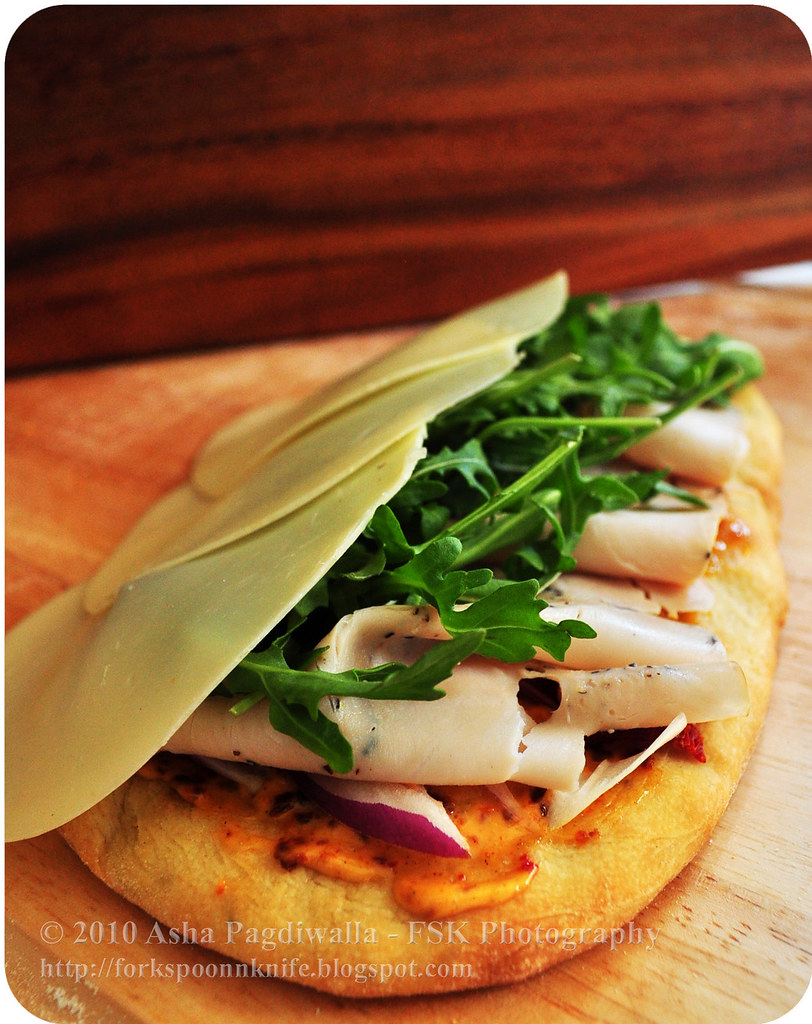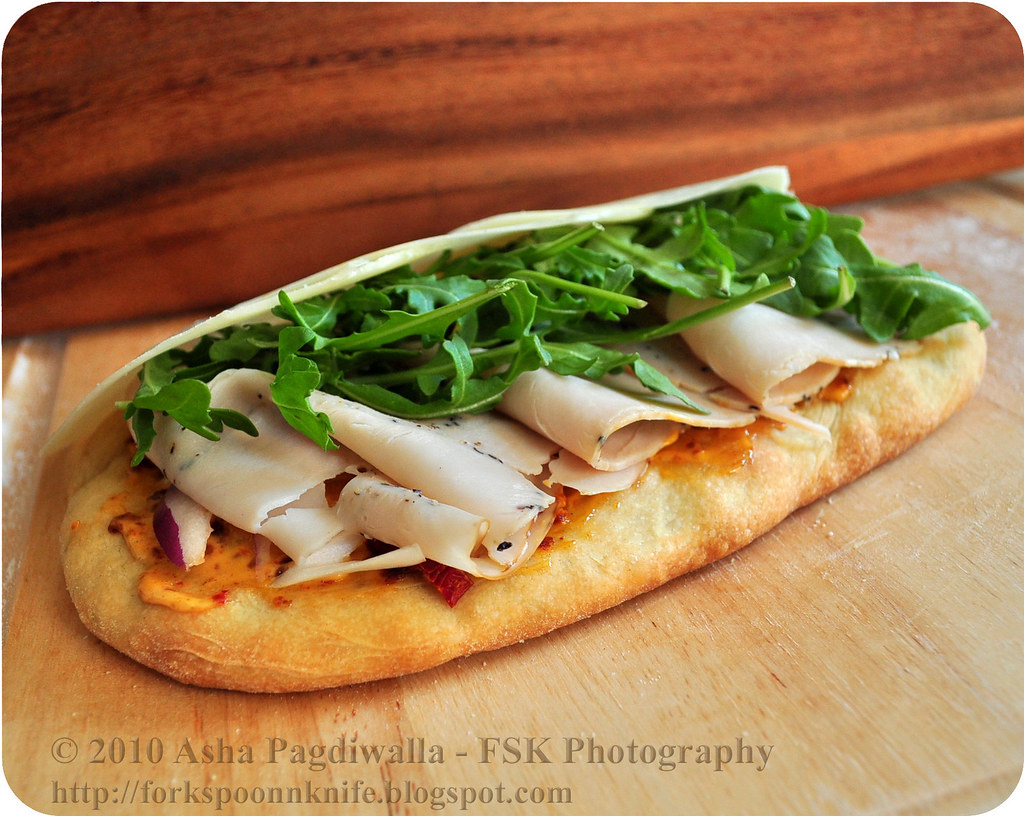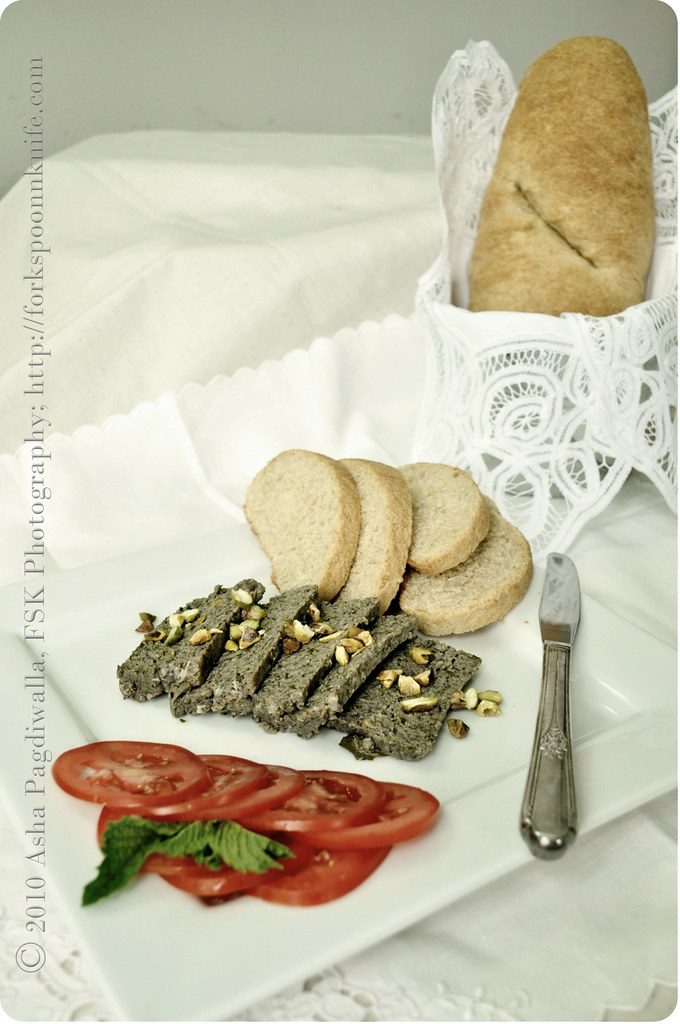
Yes indeed! We were asked to bake this month for the Daring Cooks Challenge. I am not all sure if it should not have been one for Daring Baker's but, I suppose, given it is a savory dish, it was a cooking challenge?!....
Our hostesses this month, Evelyne of Cheap Ethnic Eatz, and Valerie of a The Chocolate Bunny, chose delicious pate with freshly baked bread as their June Daring Cook’s challenge! They’ve provided us with 4 different pate recipes to choose from and are allowing us to go wild with our homemade bread choice.
We were challenged to make atleast one Pâté from the listed options and one bread of our choice. Most of the recipes for pâtés use liver, which, I quite dislike. So, I scoured around for a recipe that did not use innards and such. Quite accidentally, I remembered a book I had bought a while back in an effort to make chicken more fun to eat (for me!). There I found a recipe for a Terrine made with chicken meat and mushrooms...
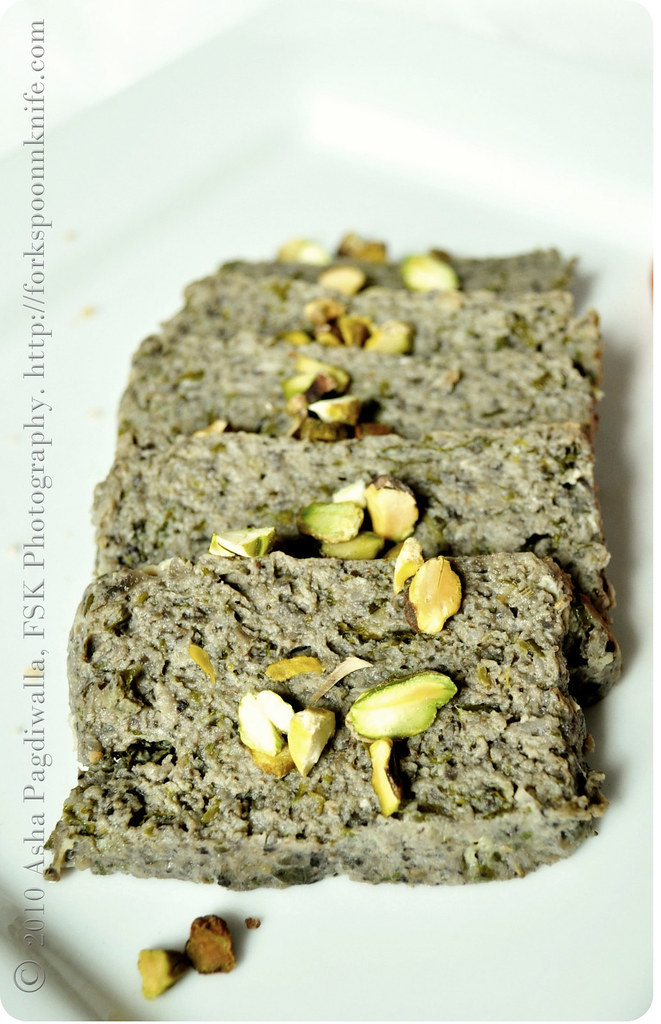
There is some debate on what is and isn't a Pâté. You may have noticed, I mentioned Terrine before; that's what I made..
Our hostesses said - Technically, a terrine is a baking recipient, usually ceramic or porcelain, with a lid – but it can also refer to the contents of the recipient. And some of the pâtés we looked at were designed to be unmolded onto a dish and then sliced, while others were meant to be left in the jar or baking dish they were prepared in, and merely used as a spread.
Wiki concurs - In French or Belgian cuisine, pâté may be baked in a crust as pie or loaf, in which case it is called pâté en croûte or baked in a terrine (or other mold), in which case it is known as pâté en terrine.

I decided to proceed with my Chicken and Mushroom Terrine recipe! For authenticity, I did bake it in a porcelain mold... I used chicken thigh and leg meat and combined it with red wine sauteed portobellos. Now, the recipe I was adapting called for fresh herbs and since I was making this late in the night, I was a bit short on most herbs.
I used what I had, which made for interesting flavors. I used mint and Fenugreek. Fenugreek is a bitter herb that is used a lot in Eastern cuisine. We use the leaves and seeds for cooking and it's bitterness is supposed to be good for the digestive system (or perhaps that was just made up so children would eat it!). Nevertheless, it does have much nutritional value.
As to the bread, Mr.FSK does not much gravitate towards the crusty varieties. So, I chose a bread with a softer crust. I have wanted to try baking an Italian loaf and this seemed the opportune moment. I followed Peter Reinhart's recipe to the T (Although I did substitute a third of the flour with whole wheat). We loved the bread. It was soft, filling and flavorful. And, the house was filled with such lovely aromas! :))
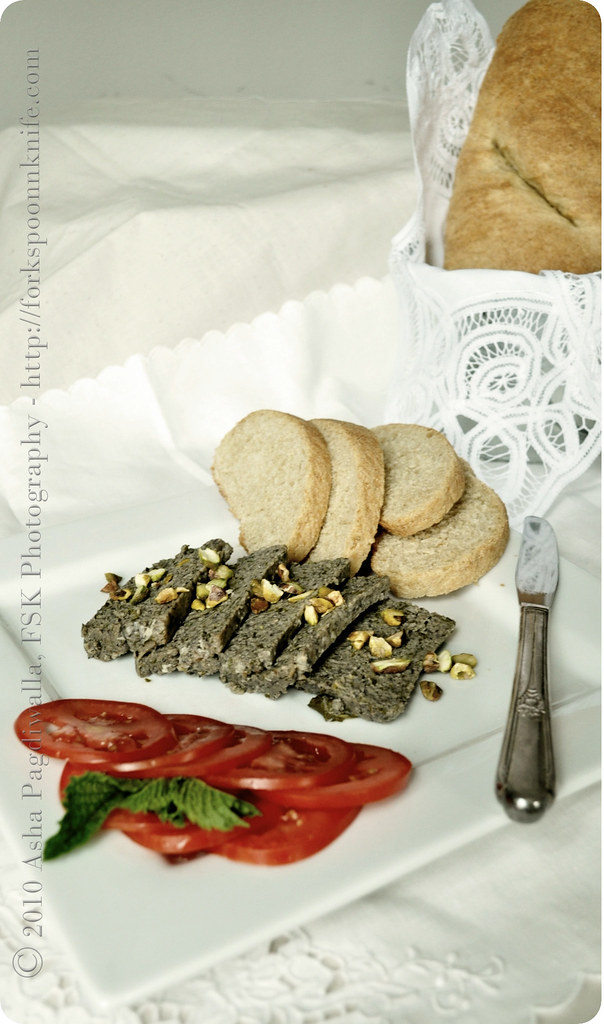
Verdict: A fun challenge, especially since I love to bake, even though, it was a bit hot around here for this exercise. I enjoyed the pâté but, perhaps, because I did not use the fattier innards, it was a tad dry and not creamy like I am used to it being. If I ever get the courage to cook liver and such, I may give it another try.. The bread, on the other hand, is definitely a repeat! :)
P.S. : I am sending my Italian loaf to YeastSpotting..
Chicken and Mushroom Pâté
2 shallots, chopped
2 generous cups, mushrooms, chopped (no stems)
1/4 cup dry, red wine
2 chicken thighs, skinned and chopped
1 egg
2 T fresh breadcrumbs
2 T chopped mint
4 T chopped fenugreek
optional: For serving, pistachios, tomatoes and mint
Preheat oven to 350F.
Cook the shallots and mushrooms with wine in a sauce pan over low heat until the vegetables are soft and the mixture is dry. Transfer to a food processor along with the chicken, egg, breadcrumbs and seasoning and process coarsely. Add the herbs and pulse briefly.
Spoon into greased molds and smooth the surface. Cover with foil and bake fpr 30-35 minutes until juices are no longer pink. Remove from oven and place a weight on top leave to cool and then chill.
Serve with roasted pistachios, thinly sliced tomatoes and garnished with mint.

